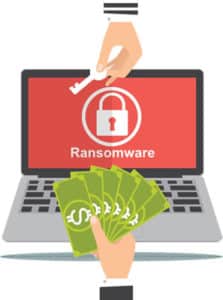Ransomware Incident Response Plan Kenya
Ransomware incidence response planning helps organizations to identify gaps in three main areas; People, Processes, and Technology. Since ransomware still follows basic malware practices and techniques, leveraging on this can help organizations uncover holes in their cloud infrastructure which are categorized on:-
- Prevention
- Containment
- Eradication
- Recovery
- Post Incidence Response
- DRP – Disaster Recovery Process
- BCP – Business Continuity Process
Root cause of a lack of ransomware readiness can be boiled down to:
- Low business priority due to a failure to communicate risk in business terms.
- Inadequate response planning from not going deep enough in testing ransomware readiness.
- Incomplete backup and DR strategy does not account for ransomware scenarios.
What we do
Enhance your company’s Ransomware readiness through Ransomware incidence response planning.
Benefits
1. Help you identify gaps in People, Processes, and Technology.
2. Develop practical processes in the prevention, detection, eradication, Disaster Recovery and Business Continuity steps.
Contact East Africa Hi Tech Solutions on 0714 883783 for Ransomware incidence response planning.
What it entails.
Ransomware is delivered via application vulnerabilities, drive-by downloads, phishing attacks etc. They don’t trigger alerts immediately and can remain dormant for days. Early detection is crucial in the containment of the threat.
Organizations have taken measures in the prevention and containment of Ransomware. Just how effective are they? Most malware allow synchronization of encrypted data to the cloud. This compromises the organization’s disaster recovery and business continuity plans. Such companies take weeks to reconstruct the data.
How we do it.
Steps to fully recover from the ransomware incidence:-
- Stop the malware executables :- to avoid lateral movement of the malware
- Acquisition of IoCs (Indicators of Compromise) :- Assist in the reverse engineering to get the offline key
- Acquisition of encrypted files :- Top check the entropy of the files.
- Threat Hunting of IoCs :- to quickly checking of the IoCs on the Servers and nodes.
- Ransomware Incidence Response Planning -RIRP. (An in-depth of how the ransomware got in, plan and Mitigate).

